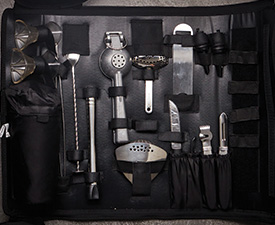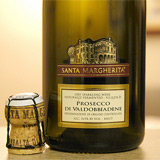Metodo Italiano - Charmat process, in which the wine undergoes a secondary fermentation in large stainless tanks rather than individual bottles, and is bottled under pressure in a continuous process.
The process was first studied by the Italian enologist Federico Martinotti and patented in 1907 by French winemaker Eugene Charmat. In the late 1930s the process was totally redefined and completely renovated by Antonio Carpene Jr. to adapt it to the Italian Prosecco grapes. The secondary fermentation in tanks under this renovated method proved to be ideal for the Prosecco grapes and surpassing in many aspects the quality of secondary fermentation in individual bottles.
This procedure was implemented as a faster and less expensive way to produce large volumes of sparkling wines. For Martini Asti the process can take 6 months to produce a refreshing well balanced sparkling wine. Also known as the 'closed tank method' this process uses a large, pressurized stainless steel tank (autoclave) to create the bubbles which are so important to the characteristics of the sparkling wine. If needed, sugar is added with the yeast, allowing a second fermentation to take place quickly in the sealed tank as the yeast begins to develop the bubbles. With the use of refrigeration, temperatures are controlled to improve and maintain the quality of the wine. Following the fermentation, the wine is kept pressurized while bottled, to keep the bubbles fresh and plentiful.
In Italy grape varieties, including Moscato, Prosecco, are best suited for fermentation in tanks. Charmat method sparkling wines can be produced at a slightly lower cost than 'methode champenoise' wines which are fermented in bottle. This method is used for 'Prosecco' and 'Asti' in particular, and produces medium to small size bubbles. This method is now used widely around the world to produce light, delicate, drink now sparkling wines. In other countries, winemakers use a mix of Chardonnay, Pinot Noir, Pinot Meunier and Pinot Blanc grapes in their blends.











